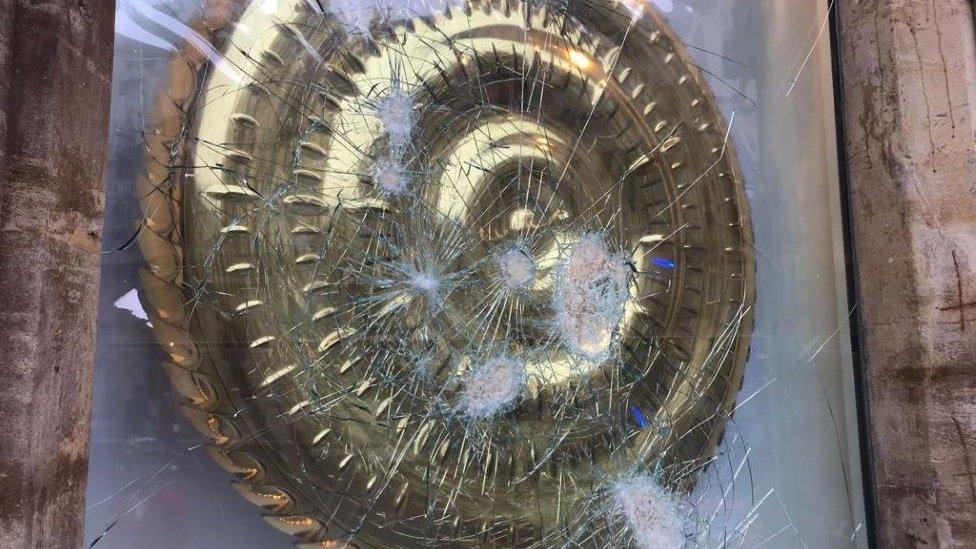Cambridge's Corpus Clock returns after hammer attack
- Published
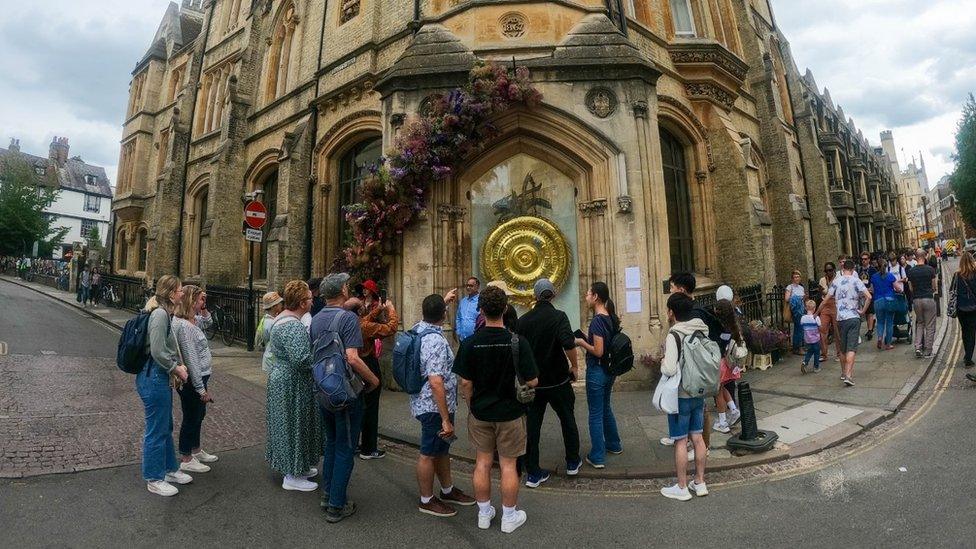
Tourists crowded round to see the newly repaired Corpus Chronophage when it returned
A famous clock that was removed after its protective glass was vandalised has been returned.
The glass in front of the Corpus Chronophage in Cambridge was smashed during the evening of 4 March.
Prof Ewan St John Smith, its custodian, said it took "a bit of time to reappear" as students were taking exams on the other side of the clock.
The timepiece, which has no hands or numbers, is one of the most distinctive monuments in the city.
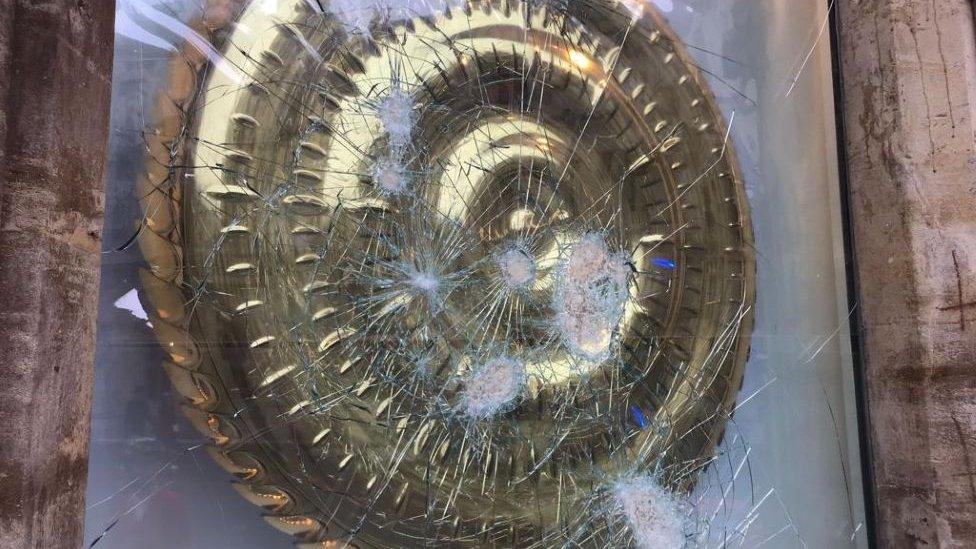
Corpus Christi College said it was "saddened" by the attack on the clock which took place in March
"Thankfully the glass did its job and there was no damage to the Chronophage itself but it had to be barred up for security reasons and we had to wait for the glass to be replaced", he added.
"In the past month or so students have been sitting exams and the library has been in full use, so because of that we thought it best to wait until exams had finished and then get the Chronophage reinstalled."
He said it was now back in time for student graduations taking place this week.

Flowers were draped round the tourist attraction as part of British Flowers Week
Also known as the Grasshopper Clock, it was created by Corpus Christi alumnus Dr John Taylor and unveiled by Prof Stephen Hawking in 2008.
Cambridgeshire Police said an investigation was ongoing, but no arrests had been made.
It previously said "a man with a hammer" had attempted to damage the clock but he had not been located.
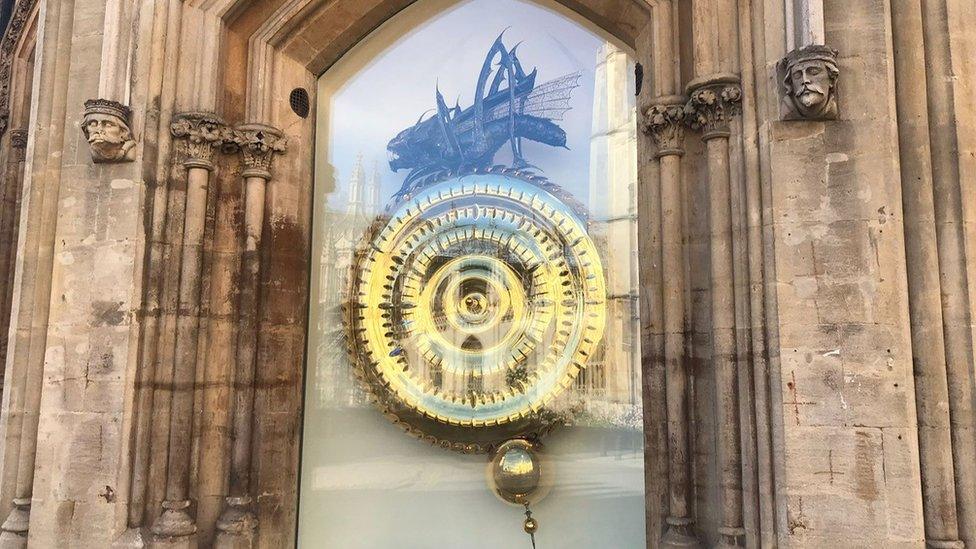
The clock is positioned on the corner of Bene't Street and Trumpington Street in the heart of Cambridge city centre
Dubbed the strangest clock in the world when first unveiled, external, it features a giant grasshopper with 60 slits cut into its face which light up to show the time.
The grasshopper or "chronophage", meaning "time-eater", advances around the 4ft-wide face, with each step marking a second.
Its movement triggers blue flashing lights which travel across the face, eventually stopping at the correct hour and minute.
But the clock is only accurate once every five minutes - the rest of the time the lights are simply for decoration.

Follow East of England news on Facebook, external, Instagram, external and Twitter, external. Got a story? Email eastofenglandnews@bbc.co.uk, external or WhatsApp us on 0800 169 1830
Related topics
- Published3 May 2023
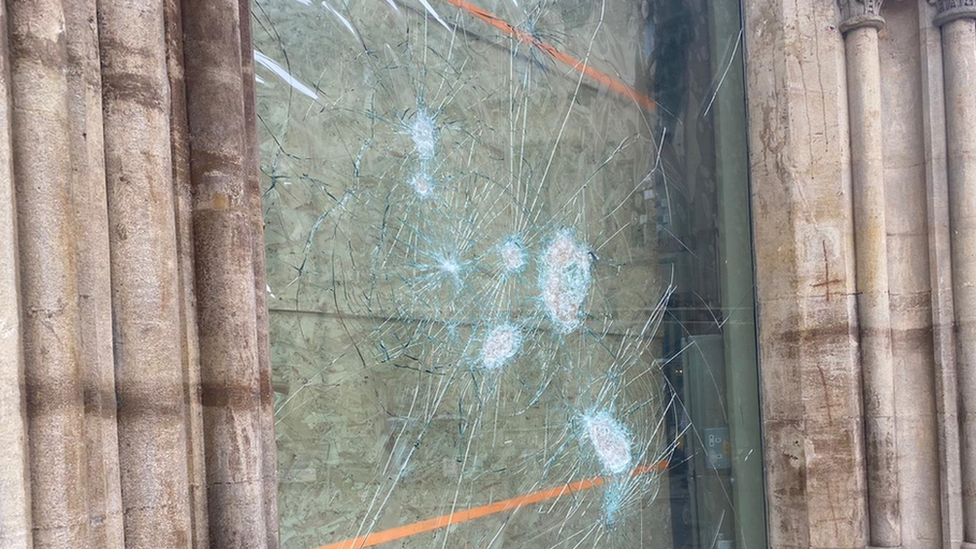
- Published6 March 2023
